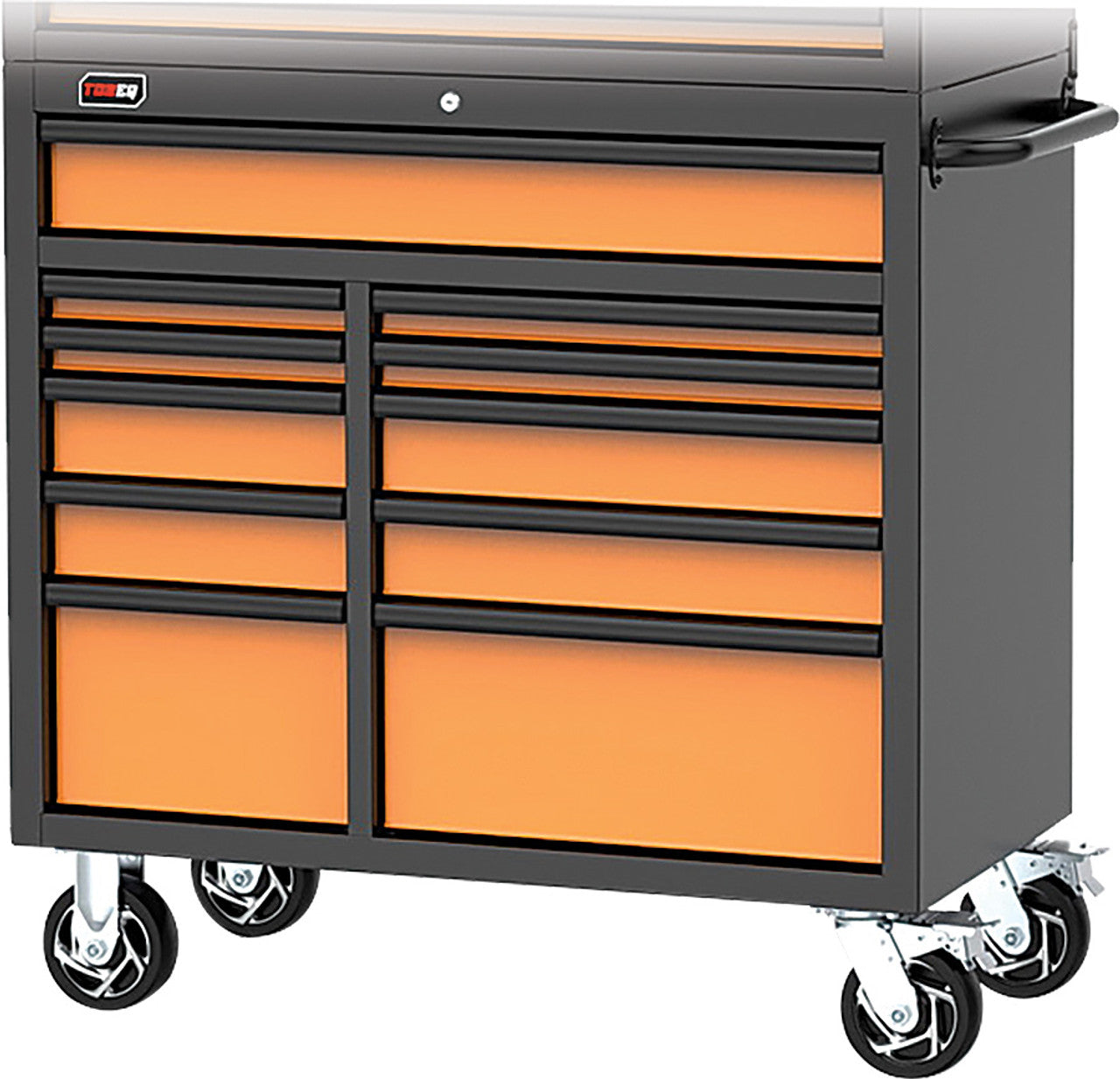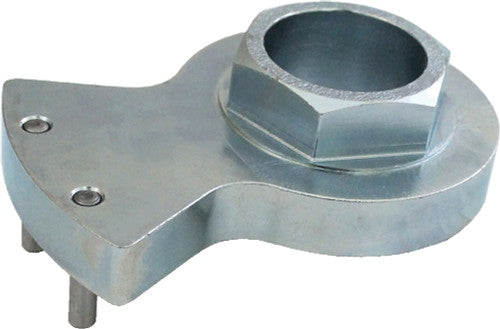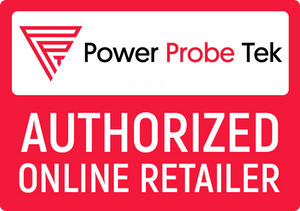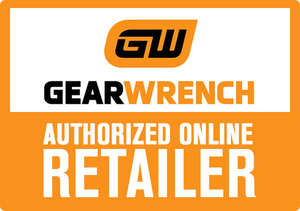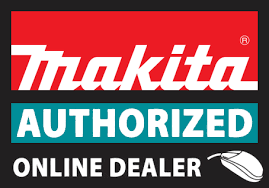Hand and power tools are pretty much everywhere these days. You can find them in both automotive repair centres and DIY home improvement projects in home garages.
For the most part, working with these tools is safe. The companies that manufacture them pour millions of dollars into research and development to ensure that they’re effective and compliant with industry standards for safe usage.
However, accidents still happen, and not just to newbies who are unfamiliar with handling these tools either. Seasoned pros can get injured when working with tools too, especially when they get too comfortable or overly confident.
So, regardless of your level of experience working with tools, it always helps to review basic safety measures.
Let’s dive right in.
Leading Causes of Injuries in a Garage

But first, let’s take a look at the statistics.
As per a report from the Consumer Product Safety Commission (CPSC), the cost of injuries caused by hand and power tools adds up to $15.4 million annually. We’re talking millions lost due to medical bills and lost work that could have been prevented by paying more attention to safety precautions.
Now, what are the usual causes behind these accidents? According to the Occupational Health and Safety Administration (OSHA), these are as follows:
- Poorly-made handles break, causing the head of the tool to fly off and hit either the person using the tool or those around them;
- Electric shock from power tools that aren’t properly grounded;
- Exposure to harmful dust, gas, or fumes due to insufficient protective gear.
Other factors that contribute to accidents include employees doing repetitive tasks, unexpected events while at work, and inexperience/overconfidence.
Safety Tips: How to Prevent Accidents When Working With Hand and Power Tools
Fortunately, the following tips should help any automotive enthusiast or mechanic (regardless of their skill level or experience) steer clear of injury while working with tools:
1. Dress for the job.
Seriously. This alone could already prevent a lot of accidents.
When working with tools, it’s best to avoid wearing stuff that could dangle or get caught up in a tool’s moving parts. (Yikes.) This includes loose-fitting clothing, jewelry (especially long necklaces), and neckties.
Got long hair? Make sure you keep it tied up nice and tight behind your head. You don’t want it getting tangled up in a drill by accident, right?
As for footwear, sturdy, non-slip shoes are highly recommended.
And while we’re on the subject…
2. Don’t scrimp on personal protective equipment (PPE).
These are essentially your first line of protection. So, what sort of PPE is good to have on hand?
A. Protective goggles.

Safety goggles or glasses will protect your eyes from irritants like debris and dust. In some cases, you may also need to use face shields to get more extensive protection.
B. Earplugs.

Even the best power tools can be loud. Overexposure to such noise over time can lead to tinnitus and other issues with your hearing.
Thus, it’s important to protect your ears with a good set of earplugs.
C. Gloves

It’s never really a good idea to be working on a vehicle with your bare hands. Harsh chemicals could spill, handling sharp tools could result in cuts, etc.
The right pair of gloves can keep them safe from injury without inhibiting their dexterity and movements.
3. Keep your work area clean and well-lit.
A cluttered and messy working area poses a major risk to your safety, so it’s important to keep things clean and tidy.
For instance, tangled cords scattered across the floor are basically an accident waiting to happen. The same goes for power tools in close proximity to flammable materials.
If you have children, it’s also best to child-proof your garage by removing all starter keys and master switches when you’re not using your tools. You may also want to use padlocks as an additional precaution.
Lastly, people tend to underestimate the importance of proper lighting. Power tools can be very dangerous, even deadly if you use them in poorly-lit conditions. If you can’t see what you’re doing, you’ll be in big trouble.
So, if your work area’s on the dim side, bring in additional light. A workspace with lots of bright, shadow-free light would be the safest option.
4. Always inspect your tools before use.
Look out for any cracks, exposed wires, or damaged plugs, especially when it comes to tools that you use often. Wear and tear is inevitable, and damaged tools often figure in accidents.
The same goes for brand-new tools. Periodic inspections can go a long way towards keeping you safe.
Essential Tips for Maintaining and Inspecting Hand Tools for Safety
Ensuring your hand tools are safe and reliable is crucial for any work environment. Here's a guide to help you maintain and inspect them effectively:
-
Invest in Quality Tools: Opt for tools made with durable materials, such as heat-treated steel. High-quality tools are generally safer and last longer than cheaper alternatives.
-
Conduct Routine Inspections: Regularly check your tools for any signs of wear or damage. Look for cracks, chips, or loose handles that could compromise safety and performance.
-
Address Issues Immediately: If you spot a defect or malfunction, stop using the tool right away. Report the problem so it can be resolved before it causes harm.
-
Stay on Top of Maintenance: Keep your tools in peak condition by performing necessary upkeep, like sharpening blades or tightening screws. This not only extends their lifespan but also enhances safety.
-
Follow Manufacturer Guidelines: Always adhere to the instructions provided by the tool manufacturer. These guidelines are designed to ensure optimal performance and safety.
-
Prepare for Contingencies: Maintain a reserve of backup tools. This ensures work can continue smoothly even if a tool is unexpectedly damaged.
-
Store Tools Safely: Always store tools in a secure location, out of reach from children and away from areas where they might pose a hazard. This includes being mindful of where tools are placed during use, especially at heights, to prevent accidents.
By integrating these practices into your routine, you can significantly reduce risks and maintain a productive and safe work environment.
5. Handle power tools with extra care.
While they’re more powerful than hand tools, power tools are also potentially more dangerous since they involve electricity.
i. Always turn them off after use.
This should be a given, but you should never leave your power tools plugged in “on standby.” Doing so could seriously injure other people who don’t realize that the tools are active.
Make sure to unplug and properly store power tools after each use.
ii. Never carry corded tools by their cords.
You could end up damaging them by accident. Keep the cords away from any sharp objects or heat sources and refrain from yanking them when unplugging the tools as well.
iii. Don’t keep your finger on the switch or trigger of a plugged-in tool.
Accidental starts are another occupational hazard that comes with working with power tools.
So, apart from unplugging tools once you finish using them, never keep your finger on the switch or trigger when holding or carrying a plugged-in one.
iv. Be extremely careful when working in damp or wet environments.
Electric shock from grounding is one of the most common causes of accidents when working with power tools. And we all know that water and electricity are a recipe for disaster.
It’s best to avoid damp or wet working environments altogether, of course, but if you can’t avoid it, you can take certain steps to reduce the risk of electric shock.
These include keeping your hands and feet dry and sitting on a wooden stool on top of a rubber mat while working.
6. Educate yourself on the proper use of your tools.
Being familiar with your tool and knowing what you’re doing is already half the battle.
i. Read the manual.
There’s a reason why your hand and power tools come with a manual, so don’t throw it away(!).
Aside from teaching you how to use your tools properly, the manual should also have additional information for improving user safety and for troubleshooting.
And when it only takes a split second of improper use to cause a life-altering injury, learning how to wield your tools properly is non-negotiable.
ii. Use only the right tools for the job.
Again, proper use of tools involves using the right tools for the right purpose. This means you shouldn’t use a wrench like a hammer, as well as vice versa.
Whether you’re using hand or power tools, selecting the right one will get the job done properly and quickly and enhance your overall safety.
iii. Grip the tools firmly.
Losing control over any of your tools will result in a hazardous situation. This is why it’s important to grip them firmly and select ones that you can comfortably wield. If it’s too heavy for you to maneuver properly, you shouldn’t use it.
When it comes to power tools, you have to be in control of them at all times. Maintaining your balance while on your feet is also crucial, hence the need to wear non-slip footwear in the garage.
The Role of Safety Training in Preventing Workplace Injuries
Safety training plays a pivotal role in minimizing workplace injuries, especially those related to tool use. Here's how:
-
Empowerment through Knowledge: Safety training empowers employees with the knowledge necessary to handle equipment responsibly and efficiently by educating them on the correct use of both hand and power tools.
-
Consistent Reinforcement: Regular training sessions ensure these crucial safety practices remain top-of-mind. This ongoing reinforcement helps workers internalize safe behaviours, making them second nature.
-
Reduction in Incidents: Well-structured training programs have been linked to a decrease in workplace injuries and accidents. Employees often discover new ways to mitigate risks, contributing to a safer work environment.
-
Promoting a Culture of Safety: A robust training program fosters a culture where safety becomes a shared value among all team members. It encourages employees to look out for one another and proactively manage risks.
-
Adopting a Proactive Approach: Beyond educating employees, comprehensive safety training often involves engaging tools and platforms that make learning interactive and impactful. This approach not only educates but also actively reduces the likelihood of accidents.
By integrating these elements into daily operations, companies can effectively reduce tool-related incidents, leading to safer and more productive workplaces.
7. Buy quality tools from trusted suppliers.
Finally, you should only buy tools from accredited retailers. No amount of safety precautions will protect you if you keep using substandard tools or worse, cheap knock-offs that are bound to fall apart at the first opportunity.
As a bonus, buying the real thing gives you access to the manufacturer’s warranty, which you can easily invoke in case you find a defect.
At MPR Tools, we always strive to provide our customers with the finest quality of both hand and power tools, all sourced straight from their manufacturers.
We remain committed to giving each customer the best and safest experience possible when it comes to their tools - and at the lowest price possible, thanks to our price-match guarantee.
Click here to check out our wide range of hand and power tools today!
FAQ
1. What are the benefits of regular safety training for employees using hand and power tools?
Regular safety training for employees handling hand and power tools offers numerous benefits. Firstly, it enhances worker safety by equipping them with the latest knowledge and techniques, resulting in fewer injuries on the job. Many companies report that consistent training helps employees learn new skills and best practices, reducing workplace incidents significantly.
-
Improved Safety Awareness: Employees become more vigilant when they are continually educated about potential hazards and the correct usage of tools.
-
Skill Enhancement: Training sessions introduce workers to advanced methods, leading to proficiency that can only come from being well-informed about their tools.
-
Accident Reduction: By consistently applying what they learn, companies have seen a marked decrease in workplace accidents, sometimes going hundreds of days without incident.
-
Boosted Morale and Confidence: When employees feel safe and knowledgeable, their overall job satisfaction and confidence in performing tasks increases.
-
Compliance with Regulations: Regular training ensures that businesses comply with health and safety regulations, safeguarding them against potential legal issues.
Investing in regular safety training ultimately leads to a safer, more productive work environment where employees are confident and well-versed in using their hand and power tools effectively.
2. How can a company improve its safety management practices regarding tool use?
To enhance safety management practices related to tool use, companies should implement a comprehensive training program for employees. This includes regular sessions focused on the correct use of both hand and power tools to ensure every team member is aware of potential hazards and how to avoid them.
Key Steps to Improve Tool Safety Management
-
Conduct Regular Training Sessions:
- Schedule frequent educational workshops to refresh knowledge on tool safety.
- Encourage interactive sessions where employees can ask questions and participate actively.
-
Utilize Engaging Training Platforms:
- Consider adopting modern training solutions that involve interactive modules and engaging content.
- Look for platforms that provide up-to-date safety information and customize training materials to suit specific needs.
-
Foster a Safety-First Culture:
- Promote an environment where safety is a core company value.
- Encourage employees to share their insights or safety concerns without fear of judgment.
-
Monitor and Review Safety Practices:
- Regularly assess the effectiveness of safety training programs.
- Perform audits to identify potential risks and address them promptly.
By embedding safety into the company culture and leveraging engaging training tools, organizations can effectively reduce the risk of injuries and improve overall safety management regarding tool use.
3. What safety measures should be taken when using pneumatic tools like nail guns?
When working with pneumatic tools, like nail guns, ensuring safety is paramount. Here's a concise guide to maintaining a safe work environment:
Secure All Components
- Inspect Regularly: Before each use, it's crucial to check that all parts of the pneumatic tool are tightly fastened to prevent malfunctions during operation.
Handling and Operation
- Pointing Protocol: Always avoid directing the nail gun or any compressed air tool towards yourself or others to prevent accidental injuries.
- Safe Disassembly: After use, ensure that the air pressure is completely released before disconnecting hoses. This prevents unexpected ejections and reduces risk.
Storage and Controls
- No Loaded Storage: Never store nail guns while they are pressurized or loaded, to prevent unintentional discharge.
- Use Safety Attachments: Employ safety clips or retainers to secure attachments and guards when using high-pressure air, especially when cleaning.
Protective Gear
- Eye Protection: Wearing protective eyewear is non-negotiable. It guards against potential eye injuries from flying debris.
- Safety Screens: Utilize protective screens to shield nearby workers from any fragments or debris that may fly during the use of pneumatic tools.
General Precautions
- Limited Pressure: Keep nozzle pressure within safe limits, ideally no more than 30 pounds per square inch.
- Unattended Tools: Tools should never be left unattended to avoid misuse or accidental activation by others.
By adhering to these practices, you contribute to your and your coworkers' safety. Remember, a secure worksite is a productive work site.
4. Why Is Eye and Face Protection Important When Using Pneumatic Tools?
When operating pneumatic tools, safeguarding your eyes and face is crucial for several reasons. Firstly, these tools can generate high-velocity projectiles, such as nails and debris, which pose a significant risk of injury. Without proper protection, these flying objects could cause serious harm or even permanent damage to your eyes or facial features.
Moreover, pneumatic tools often produce dust, chips, and other particulates that can irritate or injure unprotected eyes. This not only jeopardizes immediate safety but can also lead to longer-term health issues if frequent exposure occurs without protection.
In addition to these physical hazards, industry safety standards mandate the use of eye and face protection to minimize risks. Failing to comply with these regulations can lead to significant repercussions for businesses, including costly fines and potential shutdowns due to safety violations. These standards underscore the critical nature of wearing appropriate protective gear to prevent accidents on the job site.
In summary, wearing eye and face protection when using pneumatic tools is not just a best practice but a vital safety measure. It helps protect against high-speed projectiles and irritating contaminants and ensures compliance with safety standards, ultimately safeguarding both individual and company welfare.
Stay Safe and Tinker Smart
Your safety is just as important as the work you do. By following these essential power and hand tool safety tips, you’ll ensure that every project is completed with both skill and safety in mind. Remember, taking a few extra moments to protect yourself could save you from a lot of trouble down the road.
Ready to upgrade your tools?
At MPR Tools & Equipment, we carry only the best for DIYers and professionals alike. From safety gear to high-performance tools, we’ve got you covered for every job—big or small. Don’t forget, when you shop with us, enjoy free shipping on eligible orders, exclusive offers, and the peace of mind that comes with our 30-day money-back guarantee!
Stay safe, keep tinkering, and shop with confidence at MPR Tools & Equipment.
Sources:
https://www.cpsc.gov/s3fs-public/pdfs/2003h054.pdf
https://www.osha.gov/sites/default/files/publications/osha3080.pdf
https://hsi.com/blog/30-tips-for-hand-and-power-tool-safety
https://www.mayoclinic.org/diseases-conditions/tinnitus/symptoms-causes/syc-20350156
https://www.hseblog.com/importance-of-selecting-the-right-tools-for-the-job/

